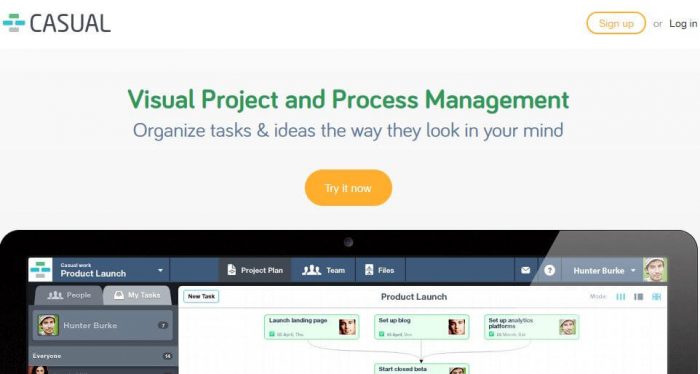How Evernote + Kanban Tool Integrations Work. Step 1: Authenticate Evernote + Kanban Tool. ( 30 seconds) Step 2: Pick one of the apps as a trigger, which will kick off your automation. ( 15 seconds) Step 3: Choose a resulting action from the other app. Unsure which solution is best for your company? Find out which tool is better with a detailed comparison of Doit.im & Targetprocess. Use an easy side-by-side layout to.

Tyler’s Tech Tips: Preview of Milanote
Milanote is a new take on digital note taking in a more visual workspace. Milanote takes questions from the likes of Evernote, Google Keep, Trello, OmniGraffle and your standard bulletin board, all in a nice user friendly web interface. Milanote market’s itself as: Milanote, The notes app for creative work.
Once in Milanote, you’re greeted with an infinite virtual pin board in which you can place and organize notes, links and images with card based styling. These notes can then be grouped together in customizable folders called boards and linked together in a flow chart. Where these boards really come into play is in their collaboration features, which allows groups of users to share ideas on the same board as if they were in the same room writing on a whiteboard.
Nesting your notes in columns following a more traditional Kanban style reminiscent of Trello-like apps

Silverlight for mac download. Milanote starts to shine when layouts get more organic. You can organize your notes or inspiration in a way that fits your team or project.
When you start implementing the Milanote folder structure “boards” you begin to really flesh out the potential Milanote can offer.
Milanote and My Workflow
Where I can see this app becoming useful is that you can quickly generate user flows, relationships, and site maps, allowing you to drop resources, copy, and inspiration all in one tight package.
When it comes to billing, Milanote allows you to create an account for free which covers management of 100 notes, images, or links to test drive the software. From there, you can upgrade to the service’s “Professional” account which is $12 per month annually and unlocks unlimited storage or their “Professional Team” tier which comes out to $10 per month annually per user. Users on the team can collaborate with each other and also enjoy unlimited storage.
Evernote For Project Management
Did You Know?

Kanban Board In Evernote
If you ever lose track of your cursor on a Mac (especially for those with many widows open and or multiple monitors) you can shake it using your mouse or track pad which will cause it to get large and animate letting you know right where it is.
Continuing our series of Personal Kanban focused integrations for LeanKit, let’s take a look at integrating Evernote with LeanKit. Say you’re in Evernote, and you want to quickly add a card to your personal kanban board in LeanKit. With this integration, you can simply add “(LK)” to the note title, and BAM! LeanKit card.
Evernote Gtd
As in our other integrations, we’re going to use Zapier.com to connect Evernote and LeanKit.Create a new “Zap” using the “New Note” trigger from Evernote with the “New -Add Card” action from LeanKit.Zapier will prompt you to authorize your Evernote account:After setting up your LeanKit and Evernote accounts,You can now configure the trigger for evernote. I chose to add a filter on the note title. In any notebook, I can add “(LK)” to the note title and have a LeanKit card created for that note. I could have chosen other options here, and you may decide you’d like it to work differently. For exaple, you could create a separate notebook in Evernote, and just have all notes from that notebook get added to LeanKit as cards. Or you could use the “tags” in evernote instead of the title, like I did.Now configure the LeanKit fields, including the Evernote Title in the LeanKit Card Title field.I also added the Evernote “URL” field to the LeanKit Description field, to provide me with a link back to the original note.So, to test this, create a new note in Evernote, with “(LK)” in the note Title:Then test and name the Zap you’ve created:And you should get a new LeanKit card, as shown below:You can also see the URL to the original note included in the description of the LeanKit card:Enjoy!This is the third post in the series by Chris Hefley of LeanKit showing how to integrate tools many of us use everyday with our Personal Kanban. You can read the previous post - Personal Kanban using Google Calendar, LeanKit and Zapier here.




